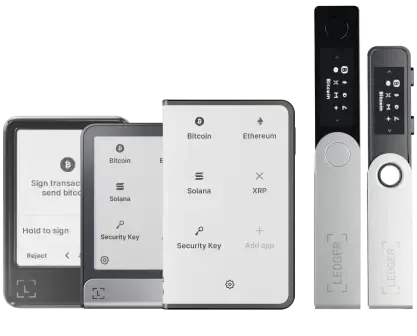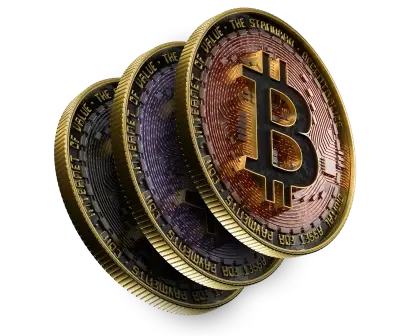Thought leadership | 05/06/2020
History of Bitcoin Halving & Bullrun

Bitcoin was the first to introduce a decentralized currency that is accessible by everyone via a simple internet connection. The creator(s) behind Bitcoin is known as Satoshi Nakamoto – who developed the code and distributed it through the network. One of the key factors in this code is that each 4 years there will be a halving event, which generates scarcity and prevents hyperinflation. But what does this mean for you and others on the Bitcoin network?
Bitcoin Protocol
There are a lot of technical details to be found in the Bitcoin protocol that can be difficult to understand at first sight, but let’s try to run down some numbers and try to explain the information in a bit more detail.
Let’s start off with the total number of Bitcoins that are available, as this is not an infinite number like the Euro’s or Dollar’s supply. Bitcoin’s supply is limited: the total number of Bitcoin that can be mined is set to 21 million, and we are currently at around 18,3 million. It’s estimated that the last Bitcoin will be mined in 2140 after the 64th halving event.
After the last Bitcoin gets mined, the miners will only receive an income based on transaction fees, instead of the block reward. Bitcoin will become scarcer and its users will own unique crypto assets that can no longer be produced by the miners. Due to its increasing scarcity, many are seeing Bitcoin as the new gold standard.
What Makes it Special
Gold was the standard around the 19th century and late 20th, as it is a rare material that cannot be copied – similar to how Bitcoin cannot be double spent. This precious metal is also scarce and the amount to be found decreases over time. Banks used to back their currency with gold but this norm changed with the introduction of FIAT currency and the gold standard was abandoned by the U.S. in 1971.
This means that FIAT only has value because a government maintains it, or banks engaging in exchange agree on its value. Today currencies around the world can be printed with unlimited supply, whenever it is deemed necessary by the government – this can create critical economic impacts.
The problems that Venezuela is facing is probably a good example of potential economical impacts, as they are stuck in a period of hyperinflation. A study shows that the annual inflation rate reached 1,300,000% in only 12 months. It basically means that their groceries will almost double in price every day. Luckily a Bitcoin owner is secured by limited supply in the total amount that can be mined, so no chances of any hyperinflation in the Bitcoin protocol.
Bitcoin Halving Timeline
Let’s rewind a little and have a look at the first block mined in 2009 containing a reward of 50 BTC. Of course the Bitcoin was not worth as much at that time as it is now. A lot has changed in the following years as Bitcoin witnessed its first spikes in the price charts.

2012 was a year where Bitcoin experienced a slow growth in value, until the first halving came in sight and the price soared above $1000 dollars for the first time! Blocks passed by all this time and Bitcoin was gaining more interest by the public while it was nearing 2016 – the year of the second halving. This time it made a lot of impact as shortly after the halving the price had risen to its magical $20.000! That sounds promising for the next halving, right?
So what is going to happen after this 2020 halving? Will it also have an impact on the price? Hopefully we are facing the next bull run in the history of Bitcoin – unfortunately, no one knows what will be its outcome.
Bull Run or Correction?
Investors and traders are doing all kinds of research to predict the future of Bitcoin and are creating beautiful charts to buy their Bitcoins at the right time. However, no one can guarantee to have the right answer and it would be best to just do your own research.
We do know that there were bull runs after every halving in the block rewards so far – late 2017 the Bitcoin went from $5.600 to $20.089 in just 4 weeks. But this bull run got answered as well with a big correction downwards. So the question remains: what do you think that is going to happen?
What’s next?
The Bitcoin network has proven itself to be one of the most trusted decentralized networks in the world. The hashrate has increased over time which means that the network’s safety is still growing stronger. Besides the miners that are increasing the hashrate, more users have created Bitcoin wallets as well. But where are these new users coming from?
Well we see that the amount of use cases for Bitcoin and other crypto currencies are increasing as well. A lot of these use cases can implement the lightning network, making crypto transactions faster and more convenient. This creates more opportunities for other companies and brands as well. But one of the most important parts of the Bitcoin protocol will always remain the same, as many aspects are implemented by design.
The limited supply is a key factor for the Bitcoin network success, it ensures owners wouldn’t have the risks to see a hyperinflation taking place. The network guarantees the scarcity of the product and is therefore likely to increase in value over time. When the 64th have taken place in 2140 and the last Bitcoins are mined, we will then have reached the maximum supply. Of course we cannot measure what the value will be at that time, but the increasing scarcity will most likely have a positive impact on the value of your Bitcoin wallet.
The future of Bitcoin can be described in many different ways – but let’s hope that decentralized currencies will form the basis for the next generation.

































